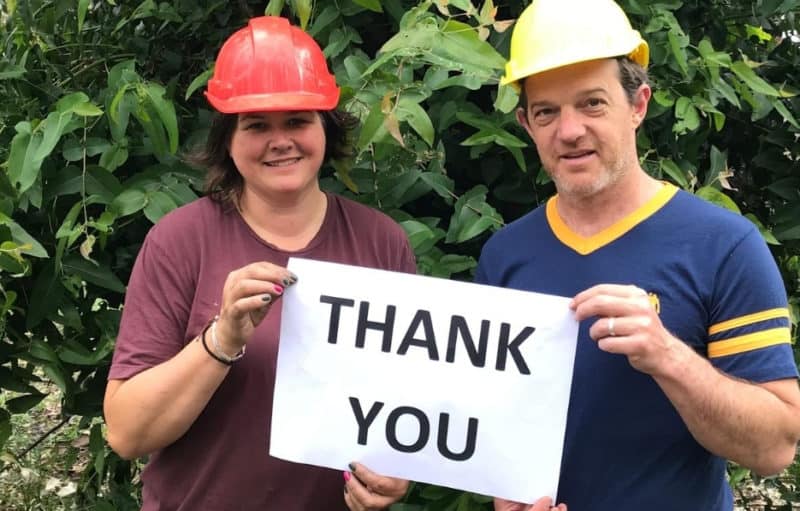MEDIA RELEASE 17 August 2020 |
One year on from tabling in the Victorian Parliament, an independent expert report recommending better nature protections gathers dust on a Minister’s desk, while mining explorations and logging threaten national park quality forests
The Andrews Government is still stalling on making a decision on a formal proposal for 60,000 hectares of new national parks for Victoria’s central west, 12 months on from it being formally tabled in Parliament and 6 months past the legislated deadline to release the decision.
“We’re confused and alarmed by the Andrews Government stalling,” said Matt Ruchel, Executive Director of the Victorian National Parks Association.
“We acknowledge the impact of bushfire and COVID-19 restrictions are high priorities for government, but long-outstanding nature conservation decisions are gathering dust for no reasonable reason.
In this same time period, the government hasn’t stopped making other decisions to the detriment of nature conservation, notably re-signing agreements to continue logging Victoria’s native forests and initiating new logging plans.”
The delay in a decision to approve the new national parks is putting the future of unique forests and the threatened species that live in them at real risk.
Shockingly, mining exploration and logging are escalating in the very same areas proposed for protection in the Central West forests, prompting outcries from conservation groups and protests from local communities.
“The lack of decision by the Andrews Government leaves these forests open to logging and mining operations that could degrade and destroy national park quality forests that should be protected in national parks for everyone to enjoy and use,” Mr Ruchel said.
“The state government’s priorities are disappointing and are not in line with community values. When the community came out of the first lockdown, people absolutely flocked to our national parks and other conservation reserves for respite and recreation, with many of our existing parks overflowing with visitors.”
“In a time when we need a bit of hope, the government priorities allowing native forest logging rather than protecting nature for everyone to enjoy is a great shame for our state.”
“As we mostly are all in lockdown again to protect the community, many Victorians are patiently waiting for their next bushwalk or camping trip. Now is time for the state government to get back on track and commit to nature and create these new national parks.
The independent, state government authority Victorian Environment Assessment Council’s (VEAC) Final Recommendations for the Central West were released 21 June 2019 and tabled in parliament on 15 August 2019. If implemented they would permanently protect around 60,000 hectares and establish establishment of 4 new or expanded national parks h would protect 380 threatened species that call the forests home through the Central West of Victoria. These include the Wombat Forest (near Daylesford), Wellsford Forest (near Bendigo), Pyrenees Ranges Forest (near Avoca), and Mount Cole Forest (west of Ballarat, near Beaufort).
“Most of these areas are within easy reach of nature-starved Melburnians, so when we are allowed back out, we will have clear pathway for new national parks to be create, open for everyone to visit and enjoy. The proposal needs to be dusted off and a decision made.”
The government’s deadline for response was prior to the COVID-19 outbreak in Australia. The process had been running for four years, with 3000 community submissions, a series of major reports and over 450 pages of documentation resulting in the recommendations.
“The Andrews Government has been missing in action on creation of new national parks in general, with no large new national parks created in 10 years. This is an opportunity to cement a real living legacy for the Andrews Government and should not be wasted”
In the past few months exploration works for gold and other minerals involving large drilling rigs has commenced in the proposed Wombat-Lerderderg National Park, in the headwaters of the Heritage Listed Lerderderg River, local community members have led direct action protests and gathered over 5,000 signatures on an online petition. (See www.change.org/p/public-a-call-to-ban-mining-in-the-wombat-state-forest)
Bushwalkers, conservationists and native plant enthusiasts are concerned that intensified logging plans have also been released for key areas around the Beeripmo Walk, a popular overnight hiking trail in the Mount Cole forest within the proposed national park for this area.
Active logging happening now on the park boundary risks the future of the rare and threatened Mount Cole Grevillea plant, found here and nowhere else on earth, which has already suffered a 75% decline, largely from logging. (Recent coverage in The Age)
Media Resources:
Photos of Central West forests
Drone Footage for Mt Cole and Wombat Forest
Notes:
- The final VEAC report was released on the 21 June 2019 (www.veac.vic.gov.au/investigation/central-west-investigation) after four years of consultation and expert assessment. As required under legislation (The Victorian Environmental Assessment Council Act The report was tabled in Victorian parliament on 15 August 2019, after which the government has six months to respond to parliament (depending on sitting days), which was due by February 20th. 404 days have passed since the tabling of the VEAC report to 15th August 2020.
- As raised in the recent Public Accounts and Estimates Committee’s Inquiry into the Victorian Government’s Response to the COVID-19 Pandemic in early August “the Government’s response to recommendations of the VEAC Central West Investigation were due by late February 2020”, and “ and the timeframe for finalising the response would be confirmed” (page 169). Yet since then, the government has re-signed the regional forest agreements, as well as reversed rules to allow onshore drilling for gas.
- National parks are the key mechanism to permanently protect natural areas, while encouraging appropriate recreational use. Tourists spend $2.1 billion per year associated with their visits to parks, and add 20,400 jobs to the state’s economy, including many regional jobs. They are the foundation of our efforts to protect threatened species and play a key role in combating the impacts of climate change.
